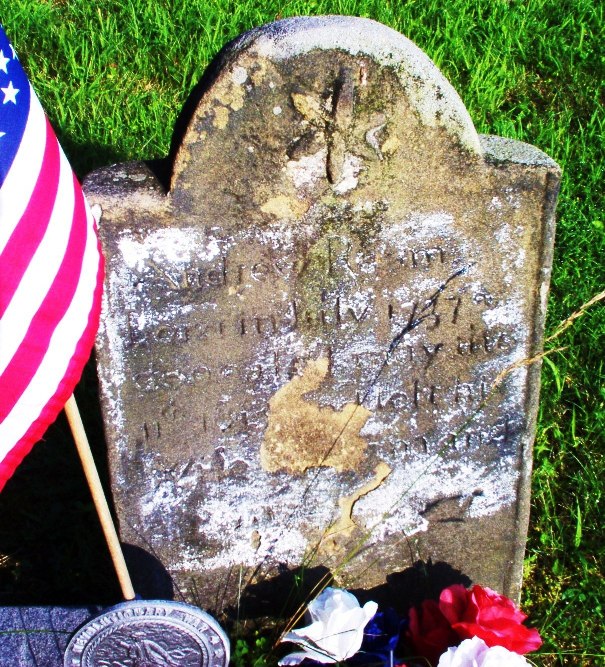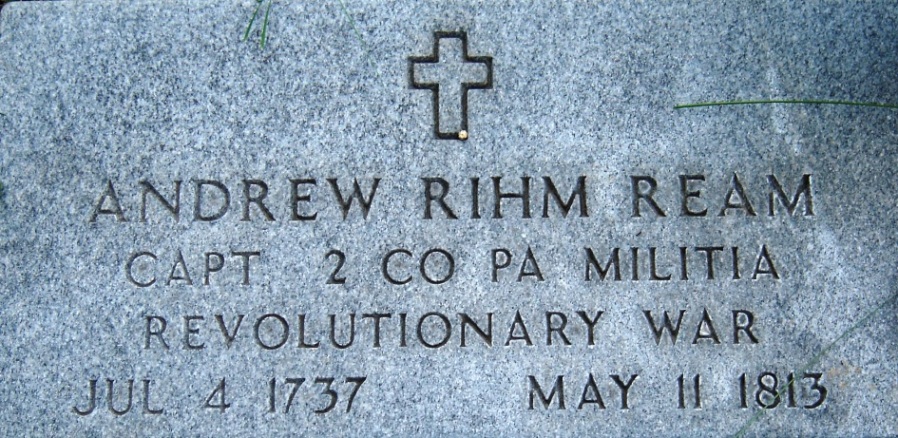Andrew REAM
SAR Patriot #:
P-276336
The following information was assembled from numerous sources and cannot be used directly as proof of Qualifying Service or Lineage.
It is considered a research aid and is intended to assist in locating sources that can be used as proof.
State of Service: PA
Qualifying Service: Captain
DAR #: A093971
Birth: 04 Jul 1737 / Lancaster / PA
Death: 11 May 1813 / Somerset / PA
Qualifying Service Description:
- Captain, 2nd Company, 3rd Battalion, Lancaster County Militia, PA, 6th Battalion militia
- PAID SUPPLY TAX 1779
Additional References:
- Marked graves of Revolutionary soldiers and patriots. DAR Magazine
- PA ARCH, 5TH Series, Volume 7, pg 610; 3RD Series, Volume 17, pg 580
- DAR RC 808302
- History of Bedford, Somerset, and Fulton Counties, PA, 1884, pg 560
- History of Lancaster County, PA, Ellis and Evans, pg 711
- History of Clarke County, IA, 1886, pg 336
Spouse: Susanna Fiesser
Children: John;
Members Who Share This Ancestor
| Date Approved | Society | ACN | SAR Member Info | Lineage via Child | View Application Detail | |
|---|---|---|---|---|---|---|
| 1978-09-14 | IA | Unassigned | John Lavaughn Mowry (115126) | John | ||
| 1993-05-25 | IA | 210599 | John Robert Irvine (140836) | John | ||
| 2010-03-30 | MO | 38370 | Earnest Lee Mowry (176565) | John |
Burial:
Location:
Confluence / Somerset / PA / USA
Find A Grave Cemetery #:
Marker Type:
Private, Military
SAR Grave Dedication Date:
Comments:
Directions to Cemetery / Gravesite:

